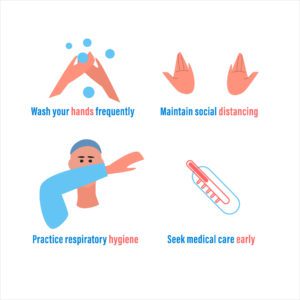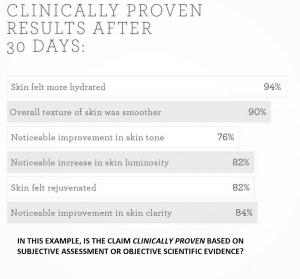Cosmetic products are all about perception. How you view and feel about yourself when using a product is an integral part of using cosmetics, and this should be reflected in the design of any cosmetic study.
The in vivo efficacy of cosmetic products should primarily be derived from validated objective assessments (such as instrumental measurements and digital photos), providing strong scientific evidence. However, the opinion of the study participants who have used the cosmetic products, is also extremely valuable and which will be discussed in this article.
On their own, subjective assessments are usually not enough to make efficacy claims. However, subjective data complements objective data, by adding external validity that may not otherwise be apparent. From a commercial point of view, data on user perception could provide guidance as to how one can generate more relatable marketing material.
What is subjective assessment?
Subjective assessment is mostly conducted in the form of questionnaires or generic product reviews. Subjective assessment is often used to substantiate claims such as “X% of participants reported an improvement in their skin hydration” or “X out of Y thought that the product was easy to use”. The results obtained by subjective assessment can be used internally during the product’s development phase – if users will like certain aspects of the product, this can be a good selling point. If users dislike certain aspects of a product, changes can be made to rectify the issue before the formulation is finalised.
Cosmetic companies seeking user’s feedback will generally concentrate questions on 3 main areas:
Sensory aspects
Subjective assessment can be used to gather data on the likeability of the product from a sensory point of view. This is a unique aspect of product testing that cannot be measured in an objective fashion. Nevertheless, an individual’s sensory experience can make all the difference when it comes to a product’s commercial success.
Do participants like the product’s colour, smell, absorption, and/or consistency? Which aspects you measure depends on the type of product you are using, but an efficacious product will not do any good if it is unpleasant to use. The scope can be further extended to include the subjects’ opinion on packaging, graphic design and brand name, gathering data similar to a focus testing group.
Product Efficacy
Word of mouth has a huge impact on cosmetic sales and positive online reviews of products efficacy from both customers and influencers is paramount for the success of a cosmetic brand. A user’s perception of a product’s efficacy is just as important as objective measures, as the average person will not have access to clinical grading scales or precise measurement instruments at home.
Product’s efficacy questions relate to the perceived benefits of the product following its use. For example, one can ask if the subjects have noticed any improvement in the areas that the product is designed to target. Subjects can also rate improvement using intuitive scales (e.g. none, slight, moderate, etc).
Product Safety
Many products these days claim to be ‘dermatologically tested’, ‘suitable for sensitive skin’ and ‘non comedogenic’. However, only products that can be used consistently by most people without causing adverse events (which are undesirable or harmful effects), are more likely to be successful in the long run. It is up to the subject, when prompted by the investigator, to report if they have experienced any negative effects (perhaps itching or redness). An overall subjective rating of a product’s safety/tolerability may also appropriate.
Assessing the data
More often than not, statistical testing is not performed on subjective data. Data is instead aggregated and descriptive summaries of the data is provided. For example, metrics can be expressed in terms of thresholds (X participants said they experienced a moderate improvement or greater) or averages (most subjects expressed high confidence in a product).
Subjective data can be easier to interpret and get a feel for, but can be less clear-cut due to the wide variability of subjects and their opinions. Objective data is precise and measured, but in a real-world setting, does a significant 5% difference really mean anything? These two types of data strength each other and approach the assessment of a product from two different angles. When objective assessments require grounding, one can look toward the subjective data for guidance. Similarly, if the subjective assessments may not be that clear, one could determine a reason why this may be from objective measures.
Perception Counts
Since the function of cosmetic products is to help improve personal appearance, the point of view of the end user and the way the user ‘feels’ about the product is of the most value for cosmetic companies and can greatly influence other users as well. For this reason, users’ self-assessment is highly regarded from a marketing perspective. It is also an extremely effective and cost-efficient option in cosmetic trials, either in addition to more scrupulous objective assessments or on its own. Subjective and objective assessments come together to provide a two-fold method of verifying the safety and efficacy of a product, strengthening the design and conclusions of cosmetic testing.




